- Home
- Patrick Robinson
The Shark Mutiny (2001) Page 13
The Shark Mutiny (2001) Read online
Page 13
“Arnold, your brutality occasionally takes my breath away. But I like it. Makes me feel safe in this big chair.”
“My job, sir, is to make every American feel safe, no matter how big or small his or her chair may be.”
“Should I now conclude this strategy meeting?”
“Mr. President, this is not strategy. This is direct action. Clear the strait. Protect the sweepers. And then guard the strait with all the menace we can. By that I mean four CVBGs on station between the area inside the gulf, and our base on Diego Garcia. Any foreign warship moves in that area without our express permission, that warship’s history.”
“Arnold, please go ahead as you think fit.”
“That’s not quite all, sir.”
“It’s not? What else? You planning to conquer Russia or something?”
“No, sir. But I am distressed by China’s plain and obvious Naval expansion. It’s no secret they want a blue-water navy for the first time in more than five hundred years. And it’s no secret they are expanding at a rapid and apparently sustainable rate. In the past few years they’ve created a new submarine fleet. They’ve bought two aircraft carriers, three Russian destroyers and a ton of hardware from the old Soviet missile outfits. They’re reaching out, sir. And we really don’t like it.”
“We don’t?”
“Sir, we are staring a major problem bang in the face. China is on the move. They have cozied up to us for a lot of years. And they’ll go on doing so for as long as it suits them. But when they feel they’re good and ready to challenge us, to dominate the East and to swing the balance of power their way…that’s when you’ll see the real face of China. Trust me.”
“Well, what do you plan to do about that?”
“I plan to stop that global expansion dead in its tracks. I want that damned great Navy of theirs back in the China Seas.”
“But how do we do that without starting a shooting war?”
“Sir, how do we keep our own global presence? How do we keep our own Navy roaming the world’s oceans making sure no one steps out of line? Right here the world enjoys Pax Americana. Just as it once enjoyed Pax Romana. That was peace on the terms of the Romans. Now it’s peace on the terms of the Americans.
“And we do it by ensuring we have a succession of U.S. bases all over the place…in the Pacific Ocean, the Indian Ocean, in the Japanese Islands, with our buddies from London in the Atlantic. That’s the only way. A chain of supplies and allies. That’s what China does not have. Yet. Except for one place. Burma.”
“You mean that new base of theirs in the swamps west of Rangoon?”
“That’s the one, sir. The one on the island in the Bassein River. It’s huge. Massive facilities for servicing and refueling warships of all sizes, including submarines. The Chinese once dominated the entire Indian Ocean and my instinct is they want to do so again, because that would give ’em control of the main eastbound oil route through the Malacca Strait. Right now that narrow, shallow freeway, with its goddamned granite bottom, is just too far from China to allow them any influence over its tanker traffic.”
“Well, how do you propose to discourage them from using their new Burmese base?”
Arnold Morgan smiled. “Not too hasty right now, sir. We got bigger problems. But if you’ve got any shares in China’s Naval operation on Haing Gyi Island in the Bassein River…sell.”
4
020330MAY07. USS Shark. The Indian Ocean.
Speed 30. Depth 400.
By the start of the final half hour of the midnight watch, Lt. Commander Headley was already mobile, moving quietly through the 30-year-old, 5,000-ton nuclear boat, a half hour before he was due to take over the control room from Commander Reid.
He had already been down to the main propulsion room where Lt. Commander Paul Flynn was watching a very minor seal leak on the main shaft. Right now the pumps were operating efficiently and dealing with the incoming fine spray with relative ease.
“Damn thing wouldn’t want to get any worse, though,” said the dark-haired engineering officer from south Boston. “Still, the rest of the stuff’s looking good—reactor’s smooth, shaft’s steady. At twenty-nine knots she feels like she’s cruisin’. No problems, sir.”
Dan Headley made his way up to the Navigation Officer’s corner of the ops room. He had only just met young Lt. Shawn Pearson, but he knew he had been rescued with the crew of Seawolf when that massive nuclear attack boat had been lost the previous year in the South China Sea.
“Hi, Shawn,” he said, leaning on the big table and staring down at the chart. “What are we? ’Bout seven hundred nor’nor-west of DG?”
“Accurate, sir. Accurate. I like that in an XO…gives me confidence…. I just sent for coffee. Want some, sir?”
The Lieutenant Commander had immediately liked Shawn Pearson because he was sharp, amusing and never lacked respect for more senior officers. Whatever his part had been in the Seawolf debacle, he had been highly decorated for it—an honor Dan Headley assumed must have been well deserved.
“Good idea, Lieutenant,” he said. “Keep me awake for the next four hours.”
“Right now I have us five degrees north of the equator, on line of longitude six-five-zero-zero. As a matter of fact, we’re running fast beneath about a zillion square miles of absolutely nothing. Maybe five hundred miles west of the Maldives, still way short of the most southerly latitude of the Indian Continent…but we’re gettin’ there, sir.”
“Any ships around?”
“No, sir. Just our immediate escort, the frigate Vandegrift. She’s steaming about three miles off our starboard beam, sir, same course…three-five-two. We’re just about five miles off the carrier’s port bow, and she’s got a destroyer off each beam—Mason to port, Howard to starboard.”
“How about Cheyenne?”
“She’s way off the carrier’s starboard bow, maybe four miles east of us. Same depth.”
Dan Headley sipped his coffee. “Mind if I take this with me?” he asked companionably.
“Not at all, sir. It’ll keep you sharp, while I’m sleeping gently.”
“Well, remember you’ve still got fifteen to go. So long, Lieutenant…don’t get us lost now.”
“Nossir. I am right on top of this.”
And as he wandered toward the control room, Dan Headley thought again of the reality of the situation—this huge jet-black steel tube, forging north through the Indian Ocean, hundreds of feet below the surface, in complete secret, a lethal weapon of war, terminally deadly to any opponent. The esprit de corps in an attack submarine was like no other feeling in any other ship. He felt that he and Shawn Pearson were somehow friends for life, after an acquaintance of just a few hours.
U.S. Navy submarines do that. They fling people together, causing them to see only the best points in one another.
Dan Headley was proud to serve on this old ship, and so far he had been impressed with every one of his crew. He especially liked the Chief of the Boat, a big blond former center fielder from the University of Georgia, Drew Fisher. The Master Chief Petty Officer had dropped out of college to try his luck at professional baseball, but failed to make it through a chronic ankle injury.
He had ended up with no university degree, no money, and no career, in or out of sports. “Sir, I didn’t even have a bat,” he had told Dan Headley. “So I just joined the Navy, and kept right on going.”
Drew had risen steadily up through the ranks, and in Lt. Commander Headley’s opinion was not finished yet. It was widely rumored that the former Georgia Bulldogs left-hander was on the verge of accepting a commission, and that a full command might not be that far away.
Drew was only 36 years old, and in addition to his onerous duties on board, he had pushed himself through course after course, gaining qualifications in navigation, weapons, hydrology, electronics, marine engineering. Right now he was working on combat systems and spent a lot of time with Lt. Commander Jack Cressend from New Orleans, Shark’s CS Officer.
Four hours ago Dan Headley had been noncommittal on the big field, four of which in his opinion held live chances. This was not good enough for Drew, who wanted heavy inside information in fine detail, so he asked the Shark’s second-in-command again.
“Come on, sir. Give me your real, true selection.”
“Well, Drew. My daddy raised one of the runners from a foal, big gray colt named White Rajah, trained in New York for Mr. Phipps.”
“Can he run?”
“Course he can run. Otherwise he wouldn’t be entered for the Derby, would he?”
“What did he win?”
“Three races as a two-year-old. Got beat by a nose in the Hopeful at Saratoga. But he improved over the winter. They sent him down to South Carolina for a spell, then he came out and damned nearly won the Florida Derby off a bad draw.”
“That his last race?”
“Hell, no. He came back to New York, won the Wood Memorial over nine furlongs. That’s the best Derby trial in my view: been won by some of the greats, Count Fleet, Assault, Native Dancer, Nashua, Bold Ruler, Damascus, Seattle Slew. The real big guns of the horse game. Christ, Secretariat got beat in it before his Triple Crown.”
“Jeez, sir. You really know that horse stuff, right?”
“Guess so. It’s in my blood. My family been raisin’ racers out in the bluegrass for about five generations.”
“Ah, but you still ain’t told me one bit of real sensitive information about White Rajah.”
“Oh, that’s easy,” replied Lt. Commander Headley. “His granddaddy damned near bit my right arm off when I was a kid. Vicious sonofabitch.”
“Seriously? Jeez, I didn’t know thoroughbred horses were savage.”
“This particular bloodline is very difficult. Got a lot of temperament in there.”
“Then why do people breed to it?”
“Because the suckers can run, that’s why. And a lot of ’em can really run. Like the Rajah.”
“Well that settles it. I’m bettin’ him.”
“You think they got an OTB in the Arabian Sea?”
“Hell, I forgot about that…Do you think I could borrow the satellite link to San Diego?”
“Oh, sure. We’re heading for the front line, in the middle of a world oil crisis, and our overhead link is somehow out of action because the Chief of the Boat is trying to back White Rajah in the Kentucky Derby.”
“Shit, it’s a cruel world, sir.”
“Crueler if he wins, Chief…and you’re not on.”
All three men laughed. There was no doubt. Lieutenant Commander Headley was already extremely well liked, and now he strolled into the control room, wished the commanding officer “Good morning,” and added, “Ready to take over whenever you say, sir.”
Commander Reid looked at his watch. “Seven more minutes, XO. I like to serve a full four hours.”
“Fine, sir. I’ll be right here. No change in the satellite contact, sir? Zero six hundred as scheduled?”
“As scheduled, XO. That’s the way I like it.”
Dan Headley continued to familiarize himself with the control room, which was smaller than he was used to. His last tour had been, fortuitously, on the USS Kentucky, one of the huge Ohio-Class Trident strategic missile submarines. And he had been under the impression he might be awarded a full command on one of those 19,000-ton nuclear giants. But, quite suddenly, he had been posted to the USS Shark, on positively her final tour of duty, to assist Commander Reid, on his last tour of duty. Dan assumed this was because of the rising unrest in the Iranian Gulf area, and there was plainly some concern about the mental steadfastness of the veteran CO.
Thus far Dan had found Commander Reid to be reserved, polite, a little rigid in his thoughts for a submarine commander. And punctilious in the extreme. But he could work with that. So long as they did not come under serious pressure.
At 0400 precisely, Commander Reid handed over the control room. “You have the ship, XO,” he said formally.
“Aye, sir. I have the ship.”
Lt. Commander Headley checked Shark’s speed, course and position. He checked with comms the 0600 satellite contact, and ordered, “Maintain speed twenty-nine, depth four hundred. Course three-five-two.” Then he picked up his telephone and checked in with the propulsion engineer.
The leak on the shaft was no worse. The pumps still were coping easily and the big Westinghouse PWR was running sweetly. The sonar room was quiet. Lieutenant Commander Josh Gandy reported no new contacts of any kind, not that this was likely at such speed.
All through the night, they ran north toward the Arabian Sea, until dawn began to break over the eastern waters, way off their starboard beam. Lieutenant Commander Headley ordered them to periscope depth and accessed the satellite. There was no change in their orders…Proceed to the eastern waters of the Strait of Hormuz in company with the aircraft carrier Harry S Truman. Then replace on station the John C. Stennis Group when it clears the area and runs back south to Diego Garcia.
Both Lt. Commander Josh Gandy and Master Chief Fisher were with the XO when he checked the orders.
“Sorry, Chief,” Dan muttered. “Nothing from OTB. Guess the Rajah’s gonna run without your money to handicap him.”
That was the last joke of the watch, and the rest of it passed slowly, as did the next two days. By 0400 on Friday morning, May 4, the Shark was almost at the gateway to the Gulf of Oman, which leads to the narrow waters of Hormuz. They had crossed the 24-degree northern line of latitude and were currently running 100 feet below the surface with another 250 feet of water under the keel. It would be light in a couple of hours, and, presumably, with the gulf closed, except for Iranian ships and very occasionally Chinese, the seas would be empty, with an inbound queue of empty tankers way over to the west.
1730 (local time). Thursday, May 3.
Fort Meade, Maryland.
The first night pictures from the overheads that passed over the Arabian Sea, and southern Iran, arrived on Lt. Ramshawe’s desk from late on the previous afternoon. Unsurprisingly they were packed with information, starting with a myriad of shots showing the Indian Navy’s Pondicherrys still working across the line of the minefield. They were making slow progress, just five knots with long GKT-2 contact sweeps, still with their 5,600-ton landing ship Magar, which was acting as “mother ship” to all six of them.
An Indian Navy tanker was also in attendance, plus two 6,700-ton Delhi-Class guided-missile destroyers, built in Bombay, and sent on by Admiral Kumar to guard his precious Pondicherrys. Warships from the Constellation Carrier Battle Group were in the area, patrolling somewhat menacingly along the line of the minefield inside the strait.
Out on the outside edge of the line, U.S. frigates rotated patrols, under orders from the carrier John C. Stennis, which was calling the shots from 10 miles astern of the picket line. No six ships were ever more thoroughly guarded than those six Pondicherrys, and they swept the line assiduously, trying to free up an area three to five miles wide to open up the seaway on the Omani side to the world’s oil tankers.
And every few hours, the waters of the strait erupted to a shuddering explosion, as they located, cut and blew one of the PLT-3 Russian-built mines. More than 11,000 miles away, Lieutenant Ramshawe studied the strange unfolding scene, making detailed notes, writing up his reports, blowing up photographs, extracting details, laying it all out for the thoroughly discredited Admiral Borden, who now had a great deal in common with Commander Tex Packard, careerwise.
He put copies on the net
work to the Pentagon, attention CNO. Other copies were made for electronic transfer to Pacific Fleet Command in San Diego, from where they were scanned via satellite to Pearl Harbor and then Diego Garcia. By private, secure telephone, Jimmy Ramshawe kept Arnold Morgan up to speed on every possible development. So far, to the satisfaction of both men, the Iranians had not dared send so much as a secondhand felucca into the waters beyond Bandar Abbas.
It was 1830 when two grainy, poor-quality satellite pictures of the inshore waters of southeastern Iran suddenly caught the eagle eye of Jimmy Ramshawe, because there, like a ghost ship in the fog, was the unmistakable outline of some kind of warship.
He reached for his glass and peered at the image. He could see a little more, but not enough. The ship was running north toward the coast of Iran in 300 feet of water. According to the grid, the ship had just crossed 25.10N and was thus 60-odd miles short of the minefield Line. The lines of latitude suggested it was moving slowly, just seven miles in the half hour between the two images. Jimmy hit a button, summoning a staff member from the developing room, and requesting an immediate blowup of the top left-hand corner of the first green-tinted night photograph.

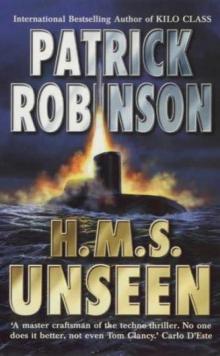 H.M.S. Unseen am-3
H.M.S. Unseen am-3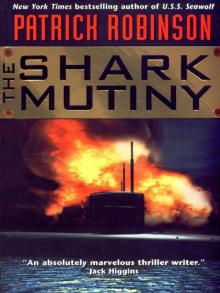 The Shark Mutiny (2001)
The Shark Mutiny (2001)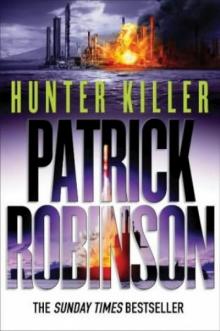 Hunter Killer am-8
Hunter Killer am-8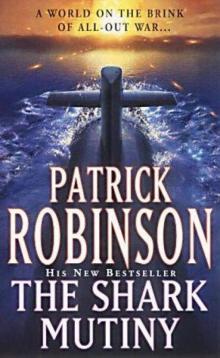 The Shark Mutiny am-5
The Shark Mutiny am-5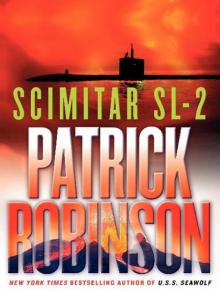 Scimitar SL-2
Scimitar SL-2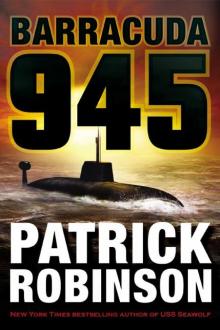 Barracuda 945 am-6
Barracuda 945 am-6 Hunter Killer
Hunter Killer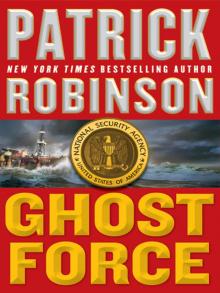 Ghost Force
Ghost Force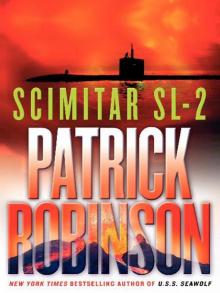 Scimitar SL-2 (2004)
Scimitar SL-2 (2004) Kilo Class am-2
Kilo Class am-2 The Lion of Sabray
The Lion of Sabray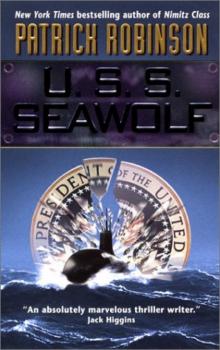 U.S.S. Seawolf am-4
U.S.S. Seawolf am-4 Ghost Force am-9
Ghost Force am-9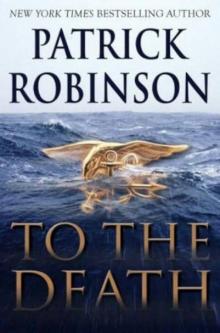 To the Death am-10
To the Death am-10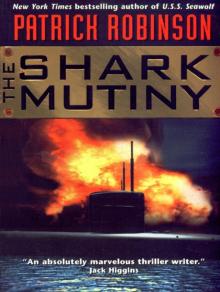 The Shark Mutiny
The Shark Mutiny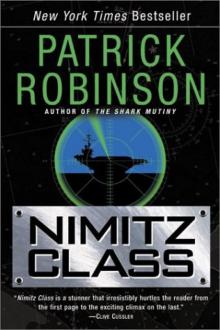 Nimitz Class am-1
Nimitz Class am-1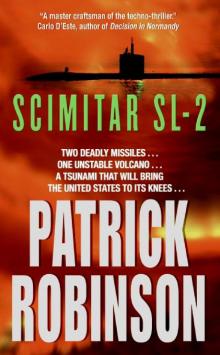 Scimitar SL-2 am-7
Scimitar SL-2 am-7 Barracuda 945
Barracuda 945 Intercept
Intercept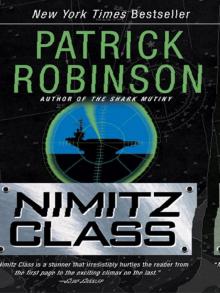 Nimitz Class (1997)
Nimitz Class (1997)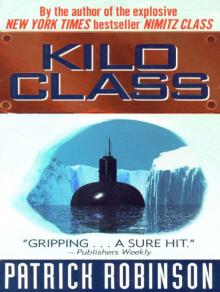 Kilo Class
Kilo Class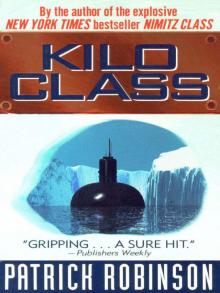 Kilo Class (1998)
Kilo Class (1998) Diamondhead
Diamondhead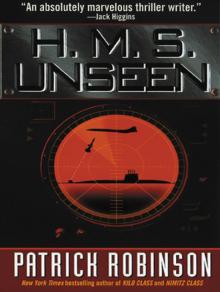 H.M.S. Unseen
H.M.S. Unseen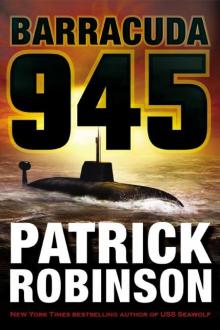 Barracuda 945 (2003)
Barracuda 945 (2003)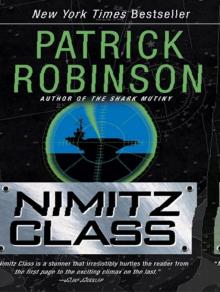 Nimitz Class
Nimitz Class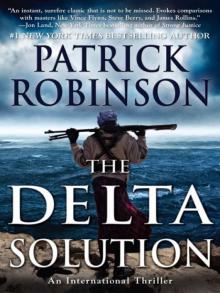 The Delta Solution
The Delta Solution U.S.S. Seawolf
U.S.S. Seawolf